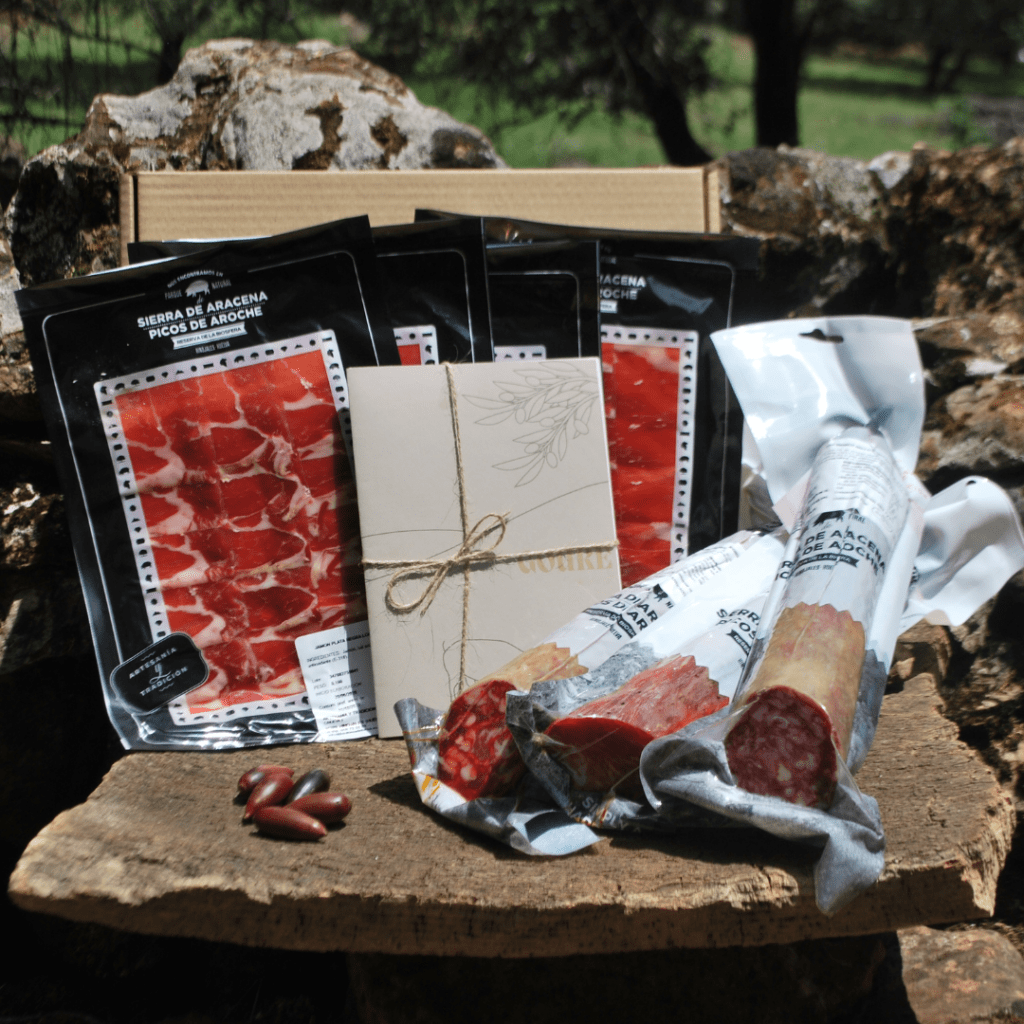Spanish Lomo
Spanish lomo is a type of cured pork loin that is popular in Spanish cuisine. It is made from the leanest part of the pig’s back, and is seasoned with spices, such as paprika, garlic, and black pepper, before being cured or aged for several months to develop its flavor. Spanish lomo is known for its tender, juicy, and slightly salty taste, and is often made from the meat of Iberian pigs, a breed of pig native to the Iberian Peninsula, which includes the countries of Spain and Portugal.
Familias artesanas españolas
Envío rápido y seguro
Siempre atentos
Envío gratis
¿Qué te apetece?
FAQ: Spanish Lomo
Looking for a delicious and succulent addition to your charcuterie board? Try Spanish lomo, a type of cured pork loin that is popular in Spanish cuisine. Lomo is made from the leanest part of the pig’s back, and is seasoned with spices, such as paprika, garlic, and black pepper, before being cured or aged for several months to a year. This results in a ham that is dense, deeply flavored, and rich in healthy monounsaturated fats.
Spanish lomo is often sliced thin and eaten as a snack, or tapa, on its own or with bread and cheese. It is also commonly used in a variety of dishes, such as sandwiches, omelets, and stews. If you’re a fan of Iberico ham, you’ll love the unique taste and texture of lomo iberico, or Iberian lomo. This delicious, succulent ham is made from the meat of Iberian pigs that have been raised on a diet of acorns, and is known as lomo bellota. It is a true taste of Spain and is sure to impress even the most discerning palate.
Where is the Spanish Lomo produced?
Spanish lomo is produced in Spain and is made from the leanest part of the pig’s back, and is seasoned with spices, such as paprika, garlic, and black pepper, before being cured or aged for several months to a year. This results in a ham that is dense, deeply flavored, and rich in healthy monounsaturated fats.
Spanish lomo is produced in several regions of Spain, including Andalusia, Extremadura, and Castilla-La Mancha. The production of Spanish lomo is regulated by the Denominación de Origen Protegida (DOP), or Protected Designation of Origin, which ensures that the lomo is made according to traditional methods and meets certain quality standards.
Spanish lomo is a popular and traditional food in Spanish cuisine, and is enjoyed by many people around the world. It is often served thinly sliced as a tapa, or small snack, and is also used in a variety of dishes, such as sandwiches, omelets, and stews.
How is the Spanish Lomo produced?
Spanish lomo is produced in Spain from the leanest part of the pig’s back, and is seasoned with spices, such as paprika, garlic, and black pepper, before being cured or aged for several months to a year. The production of Spanish lomo involves several steps:
- Selection of the pork: The pork is carefully selected for its size and quality.
- Trimming: The pork is trimmed to remove excess fat and other unwanted parts.
- Mixing: The pork is mixed with spices, such as paprika, garlic, and black pepper, and other ingredients, such as salt and vinegar.
- Curing: The pork is left to cure for several weeks to several months, depending on the size and type of lomo being produced. The curing process helps to preserve the meat and also contributes to the flavor of the final product.
- Drying: After curing, the lomo is hung to dry in a well-ventilated area for several months to a year. This allows the meat to lose moisture and develop its characteristic flavor and texture.
- Slicing and serving: The lomo is sliced thin and served as a tapa, or small snack, or used in a variety of dishes, such as sandwiches, omelets, and stews.
Spanish lomo is known for its rich, flavorful taste and tender, succulent texture, and is a popular and traditional food in Spanish cuisine. It is enjoyed by many people around the world.


